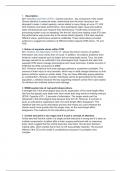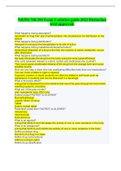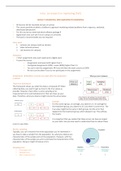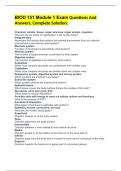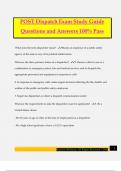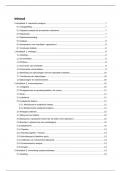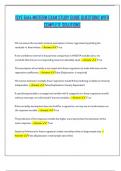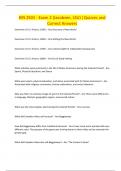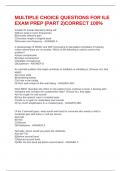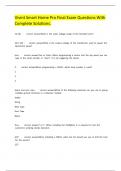A01: Baddeley and Hitch (1974) - Central executive - key component of the model.
Directs attention to particular tasks, determining how the brain 'resources' are
allocated to tasks. Limited capacity, cannot attend to many things at once. Pl, VSS
A03: Explains dual tasks performance. Give participants (pps) visual and auditory
tasks simultaneously and measure their performance. If both tasks involved one
processing system such as repeating "the the the" aloud and reading a text (PL) then
the performance was poorer due to the stores limited capacity. If the tasts required
different stores, performance would be unaffected. These observations provided
evidence to suggest the existence of different limited capacity STM stores - PL and
VSS
2. Notion of separate stores within STM
A01: Shallice and Warrington (1970) KF, whose short-term memory of auditory
information was much worse than of visual. In addition, his auditory problems were
limited to verbal material such as letters but not meaningful sound. Thus, his brain
damage seemed to be restricted to the phonological loop. Supports the claim that
separate STM stores manage phonological and visual memories. A better account of
STM that the STM component of MSM.
A03: However, evidence from brain-damage patients is sometimes unreliable. The
process of brain injury is very traumatic, which may in itself change behaviour so that
person performs worse on certain tasks. They can have difficulties paying attention
so underperform. Results of certain individuals cannot be generalised to the whole
population. Limitation because the key supporting research comes from case studies
of individual who suffered serious brain damage.
3. WWM explain lots of real-world observations.
A strength lies in the phonological loop and its explanation of the word-length effect
(the fact that people cope better with short words than long words in working memory
(STM). Capacity of PL - 2 seconds of information. The longer words can't be
rehearsed in the phonological loop because they don't fit. However, if a person is
given an articulatory suppression task, the word-length effect disappears. This
repetitive task ties up the articulatory process and means you can't rehearse the
shorter words more quickly than the longer ones, so the word-length effect
disappears. The evidence for the articulatory process.
4. Central executive is too vague and it is just a concept of attention.
Critics also feel that the notion of a single central executive is wrong and it is seen as
multiple components. A patient after a brain surgery performed well on reasoning
tests, which suggest that his central executive was intact. He had poor decision-
making skills, which implies that in fact his CE was partially impaired. The account
offered of the CE by the model is unsatisfactory because it is probably more
complex.

